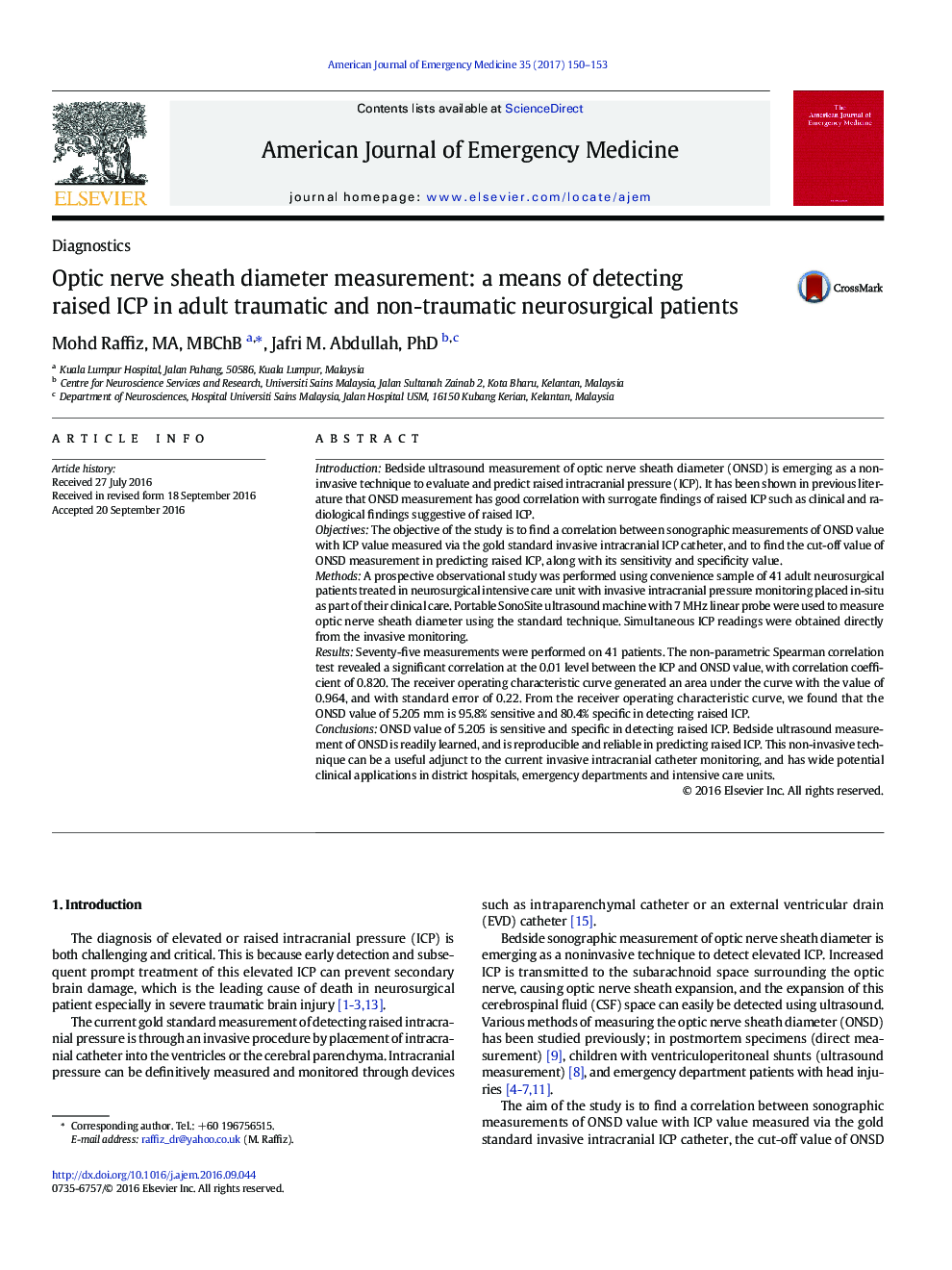| Article ID | Journal | Published Year | Pages | File Type |
|---|---|---|---|---|
| 5650777 | The American Journal of Emergency Medicine | 2017 | 4 Pages |
IntroductionBedside ultrasound measurement of optic nerve sheath diameter (ONSD) is emerging as a non-invasive technique to evaluate and predict raised intracranial pressure (ICP). It has been shown in previous literature that ONSD measurement has good correlation with surrogate findings of raised ICP such as clinical and radiological findings suggestive of raised ICP.ObjectivesThe objective of the study is to find a correlation between sonographic measurements of ONSD value with ICP value measured via the gold standard invasive intracranial ICP catheter, and to find the cut-off value of ONSD measurement in predicting raised ICP, along with its sensitivity and specificity value.MethodsA prospective observational study was performed using convenience sample of 41 adult neurosurgical patients treated in neurosurgical intensive care unit with invasive intracranial pressure monitoring placed in-situ as part of their clinical care. Portable SonoSite ultrasound machine with 7 MHz linear probe were used to measure optic nerve sheath diameter using the standard technique. Simultaneous ICP readings were obtained directly from the invasive monitoring.ResultsSeventy-five measurements were performed on 41 patients. The non-parametric Spearman correlation test revealed a significant correlation at the 0.01 level between the ICP and ONSD value, with correlation coefficient of 0.820. The receiver operating characteristic curve generated an area under the curve with the value of 0.964, and with standard error of 0.22. From the receiver operating characteristic curve, we found that the ONSD value of 5.205 mm is 95.8% sensitive and 80.4% specific in detecting raised ICP.ConclusionsONSD value of 5.205 is sensitive and specific in detecting raised ICP. Bedside ultrasound measurement of ONSD is readily learned, and is reproducible and reliable in predicting raised ICP. This non-invasive technique can be a useful adjunct to the current invasive intracranial catheter monitoring, and has wide potential clinical applications in district hospitals, emergency departments and intensive care units.
